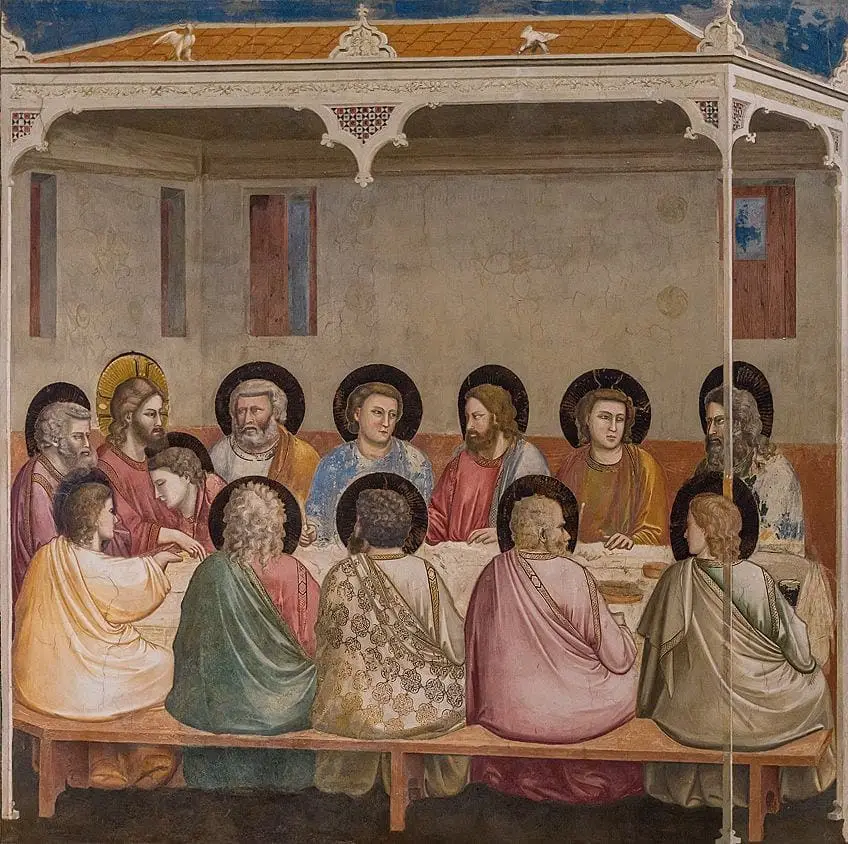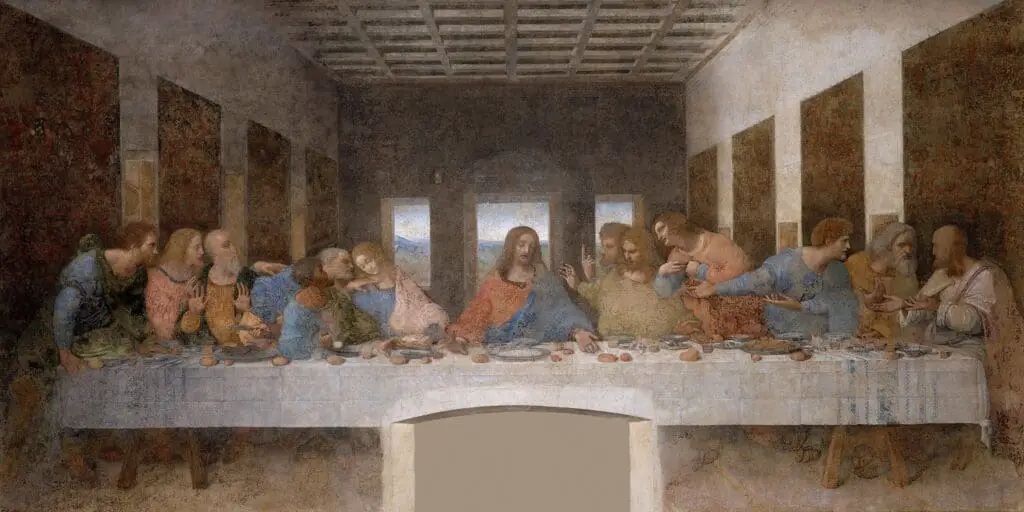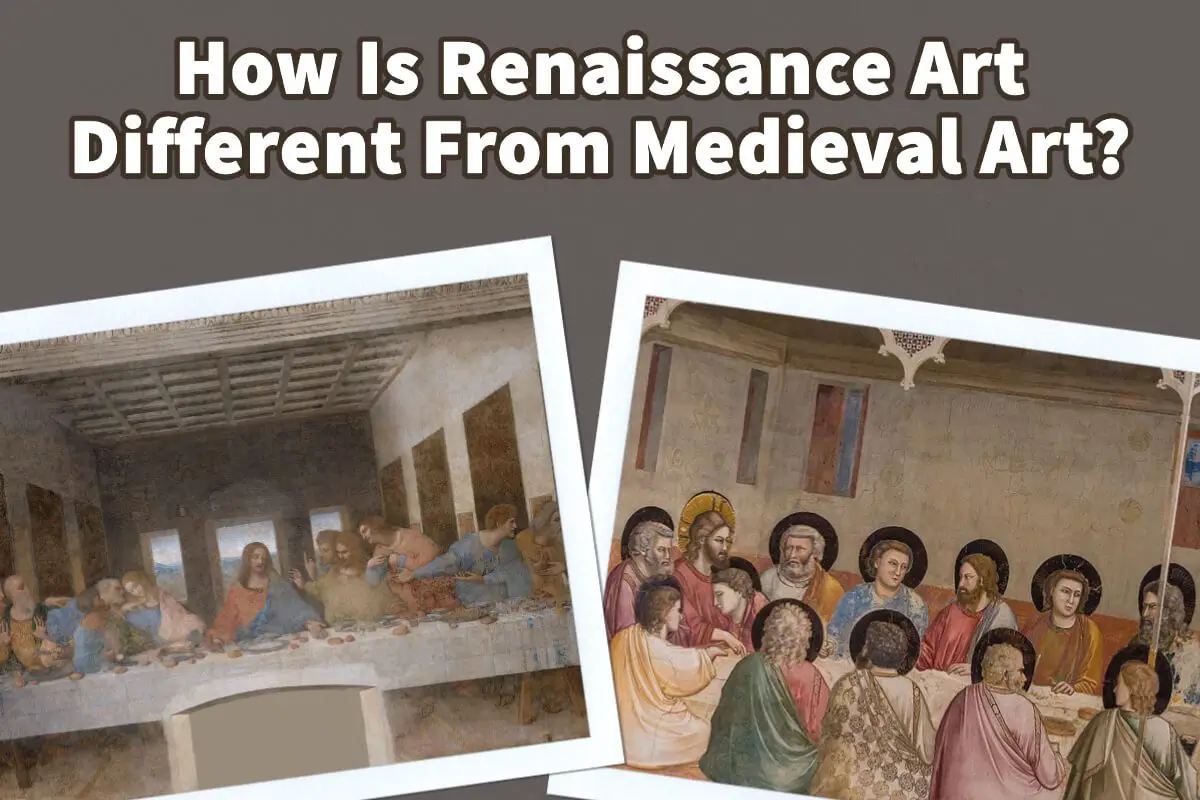Renaissance art and medieval art are two very different types of art movements. They are both essential art movements for their periods.
Medieval art was art that was created in the Middle Ages. During the Middle Ages, art was mainly religious and was concerned with conveying Christian beliefs and values to the population. Renaissance art was less focused on religion but more on the perfect human form and showing people’s daily lives, including human emotions. Renaissance art was a realistic art form inspired by ancient Greek and Roman art.
Table of Contents
- Comparing Renaissance and Medieval Art: Key Differences and Characteristics
- Renaissance Art And Medieval Art Periods Had Different Focuses
- Renaissance Art And Medieval Art Had Different Artistic Styles
- Renaissance Art And Medieval Art Had Different Periods Of History
- Renaissance And Middle Ages Had Different Views Of God
- The Renaissance And Medieval Art Had Very Different Artistic Focuses
- 10 Monumental Ways Renaissance Art Transformed the Art World Forever
- Frequently Asked Questions
- Related Questions
Comparing Renaissance and Medieval Art: Key Differences and Characteristics
Renaissance and Medieval art, two pivotal art movements, represent distinct epochs in European history. Medieval art, flourishing during the Middle Ages, predominantly centered around religious themes, aiming to communicate Christian doctrines and moral values. In contrast, Renaissance art, emerging later, shifted focus towards realism, emphasizing the human form, daily life, and a wide range of human emotions.
This artistic evolution drew heavily on the classical influences of ancient Greek and Roman art, marking a significant departure from the primarily religious focus of its medieval predecessor. Read on as we explore more.
Renaissance Art And Medieval Art Periods Had Different Focuses
Renaissance art and Medieval art had very different artistic focuses. Medieval art was focused on religion, particularly conveying Christian beliefs and values. Religion was at the center of Medieval art.
Renaissance art was not as focused on religion but on people and their daily lives and how they lived those lives.
Renaissance Art And Medieval Art Had Different Artistic Styles
Renaissance art focused on perspective, including the proportions of the subject matter. For Renaissance artists, the human form and making a human form as realistic as possible was essential to them.
Medieval art did not focus on this; their paintings were flat, and they did not care much about whether the paintings had realistic proportions. They often use just a single color on an object and do not try to make things such as skin tones and other aspects of the human figure realistic.
Renaissance Art And Medieval Art Had Different Periods Of History
Renaissance art and Medieval art were from different periods of history. Medieval art was during the period known as the Middle Ages. It was the time during the fall of the Roman empire from about 250 BC to the mid 1400s.
During the Middle Ages, there was a declining population and a collapse of central authority, including invasions and mass migration of tribes and people. So it could be said that the Middle Ages were a time of great wars, expansions, and upheavals.
The Renaissance was considered to be a time of rebirth or reawakening. It is also known as the age of discovery, as many discoveries occurred. For example, in the mid-1400s, Gutenberg invented the printing press.
The Renaissance took place from the end of the 15th Century to the 17th Century. It was a time of great rebirth and discovery.
The Renaissance was a time when the world was changing. Discoveries were taking place, and new inventions were occurring.
Renaissance And Middle Ages Had Different Views Of God
Significant differences between the Medieval art of the Middle Ages and the Renaissance era was how they saw God and worldly pleasures. During the Middle Ages, people believed they could demonstrate their loyalty to God by wearing rough clothing and eating plain food.
It was almost pious their belief system and how God viewed them and viewed pleasure was tied into religion. Pleasure was something considered to be taboo.
During the Renaissance, people in the church had their utmost respect, and the church’s authority was not to be questioned.
However, during the Renaissance, people began believing they could enjoy life without offending God. So you can see this demonstrated in many of the artwork and paintings of the Renaissance. Also, many people during the Renaissance had very different views and thoughts. They began questioning the church and engaging more in free thought or free will.
Many in the Renaissance, including the artist, had a reawakening as it was a time of learning, exploring, and developing things that they thought could make life better for all humankind.
The Renaissance And Medieval Art Had Very Different Artistic Focuses
The focus between the Renaissance artists and the Medieval artists was highly different.
During the Middle Ages, very few people could read or write, and it was a time of enormous economic hardship. People were ruled by overly violent and bloodthirsty kings and emperors; it was a time when there were very few inventions or improvements, and strict governing rules confined people.
In short, the Medieval or the Middle Ages was when most people were trying to survive, keep their heads down, and get on with life without being forced into a war or be killed.

The major art movements of medieval art are considered to be as follows:
- Early Christian Art – This was art produced by Christians or under Christian patronage. Usually from about 250 to 525 AD.
- Migration Period of Art – The Migration Period of Art is the art of the Germanic people during the migration period, which is about 300 to 900 AD.
- Byzantine Art – Byzantine art is the art produced by Christian Greek art. This is the period viewed from the decline of Rome to the Fall of Constantinople in 1453. The area for this art was mainly Eastern Orthodox states in Eastern Europe and Islamic states in the Mediterranean area.
- Insular Art – Insular art is also known as Hiberno-Saxon art and is from the post-Roman era of the British Isle, which includes Britain and Ireland.
- Romanesque Art – Romanesque art was the art in Europe from about 1000 AD until the Gothic style in the 12th Century.
- Gothic Art – Gothic art was a medieval art that developed in Northern France in the 12th Century and then spread to Europe. In Italy, the Renaissance started after the Gothic art, but the Gothic style remained in some parts of Europe for a while.
As you can see, medieval art covers an enormous scope of time and place. In fact, for over 1000 years in Europe and other parts of western Asia and North Africa, the medieval art movement existed.
Medieval art has a very different focus than the Renaissance period of art. One of the most important things to remember is that Renaissance art marked an abrupt break from medieval art and medieval values.
The Renaissance period of art started in Italy. Still, Renaissance art was a time of rebirth and reawakening, so I brought with the movement some of the greatest artists and artworks, including Leonardo da Vinci, Michelangelo, and Raphael.

Here are some of the things that were important and inspired the Renaissance artists:
- Ancient Greek And Rome – Ancient Greek and Rome inspired Renaissance artists. Also, Greek and Roman statues were unearthed during this time, which inspired these Renaissance artists’ works of art.
- Human Body – The human body or figures were essential to Renaissance artists. They believed in the perfect human form; many Renaissance artists became so consumed with the human condition that they even started dissecting human bodies to learn more about the human body.
- Realism – Realism and showing the realistic nature of life were also critical to Renaissance artists. Proportion, scale, and symmetry were important aspects of their artwork.
- Emotions And Movement – You can also see emotions and movement in Renaissance art. The artist would paint people as if they were doing something or were about to do something. The Renaissance paintings show human emotion or movement.
- Science And Art – The Renaissance was a reawakening and rebirth; many artists became inventors and scientists. Leonardo da Vinci and his scientific discoveries and inventions are great examples of this. Other artists like Michelangelo were also involved in science in this era, a time of great learning and awakening.
- Light Was Important – Light and the study of light were essential to Renaissance artists. They understood the power that light could have in their paintings and to give the emotion or the feeling that they wanted to give
If you use one word to describe the Renaissance, the word would need to be rebirth. The Renaissance was a time when the world was looking at a new reawakening, and medieval art was a dark time for the world.
Renaissance art was a time when art was being reborn again. Artists were trying new techniques and learning new things to develop the human form more realistically.
But more than that, the Renaissance art era gave us many talented and gifted artists who have continued to inspire many artists throughout the ages.
10 Monumental Ways Renaissance Art Transformed the Art World Forever
The Renaissance, stretching from the 14th to the 17th century, marks a pivotal moment in artistic thought and technique evolution. This “rebirth” of art and culture, originating in Italy, did not merely showcase a change in style or medium but fundamentally altered how we perceive and value art.
Here are ten ways in which Renaissance art irrevocably changed the art world:
Introduction of Linear Perspective:
Renaissance artists introduced the concept of linear perspective in their paintings, creating a sense of depth and three-dimensionality on a two-dimensional canvas. This revolutionary technique, exemplified by Brunelleschi, forever changed how art rendered space.
Emphasis on Realism and Naturalism:
Moving away from the stylized forms of the medieval period, Renaissance artists aimed to depict the world and its subjects as realistically as possible. This led to detailed studies of anatomy, landscapes, and everyday scenes.
Revival of Classical Values:
The classical art and philosophy of ancient Greece and Rome deeply inspired artists and thinkers of the Renaissance. This led to a resurgence in artworks reflecting classical themes, myths, and aesthetic ideals.
Humanism Takes Center Stage:
Renaissance art emphasized human experience and value. With this human-centered approach, artists started to depict secular subjects, focusing on individualism, emotions, and the human form in an unprecedented way.
Chiaroscuro and Sfumato:
Techniques such as chiaroscuro (strong contrasts between light and dark) and sfumato (the soft blending of tones) were refined during this period. These techniques, utilized by masters like Leonardo da Vinci, added depth, volume, and mood to their subjects.
The Birth of Portraiture:
While portraits existed before the Renaissance, this era elevated portraiture to a new level. Artists meticulously depicted their subjects with individual characteristics, showcasing both external appearance and internal essence.
Rise of Patronage:
The concept of art patronage flourished, with powerful families like the Medicis commissioning artworks not just for religious purposes but also to showcase their influence. This system allowed artists to experiment and innovate, fostering a vibrant art scene.
Multiplying Mediums:
The Renaissance period they witnessed a diversification of artistic mediums. From frescoes in chapels to oil paintings on canvas, artists had a wider array of tools and techniques.
The Artist as a Genius:
Before the Renaissance, artists were often viewed merely as skilled laborers. However, this era began to recognize artists as individuals with unique talents and visions, laying the groundwork for the artist’s concept as a genius or visionary.
Spread of Artistic Knowledge:
The Renaissance era saw the publication of treatises on art techniques, theories, and practices. Books like Alberti’s “On Painting” spread knowledge about linear perspective and composition, democratizing knowledge and influencing generations of artists.
Renaissance art acted as a catalyst, ushering in modernity to the art world. The principles and techniques birthed during this period continue to influence contemporary artists, making the Renaissance a historical epoch and a living testament to art’s enduring power to reinvent itself.
Anita Louise Art is dedicated to art education, great artists, and inspiring others to find and create their art. We love art that uplifts and inspires. #ArtToMakeYouSmile! #ArtToMakeYouHappy!
If you are interested in seeing any of my art, you can find out more by clicking here. If you are interested in what inspires me and my paintings, you can discover more by clicking here.
We have a free newsletter and would love you to be part of our community; you can subscribe to the newsletter by clicking here. I would be happy to talk to you if you have any questions. You can reach me, Anita, by clicking here.
Subscribe to our Anita Louise Art YouTube Channel filled with great videos and information by clicking here.
Frequently Asked Questions
What is the difference between medieval art and Renaissance art?
Medieval art is characterized by its focus on religious themes, flat two-dimensional figures, and stylized forms, while Renaissance art is known for its realism, use of perspective, and interest in classical subjects.
How did pre-Renaissance art differ from Renaissance art?
Pre-Renaissance art, which existed between the 12th and 14th centuries, was marked by a focus on religious themes and a lack of interest in naturalism. In contrast, Renaissance art, which emerged in the 15th century, was characterized by a renewed interest in the natural world and a desire to create realistic representations of it.
What are some of the defining characteristics of Renaissance art?
Renaissance art is characterized by its use of perspective, realism, and a focus on classical subjects such as mythology and ancient history.
What distinguishes Renaissance art from Middle Ages art?
Renaissance art is known for its realism, use of perspective, and interest in classical subjects, while art from the Middle Ages tended to focus on religious themes and stylized forms.
How did the Renaissance change the way art was produced?
The Renaissance brought about a renewed interest in classical art and ideas, which led to a focus on realism, perspective, and individualism in art production.
How did the development of new techniques and materials impact Renaissance art?
The use of oil paints, linear perspective, and other techniques allowed Renaissance artists to create more realistic and detailed works than had been possible in previous eras.
How did Renaissance art reflect broader social and cultural changes during the period?
Renaissance art was shaped by broader cultural trends such as humanism, the revival of classical learning, and the emergence of a new merchant class that supported the arts.
How did Renaissance art compare to art from the ancient world?
Renaissance artists drew inspiration from ancient Greek and Roman art, but also sought to surpass it in terms of technical skill and realism.
How did Renaissance art influence later artistic movements?
Renaissance art served as a foundation for many subsequent artistic movements, including the Baroque, Rococo, and Neoclassical styles.
What lasting impact did Renaissance art have on the art world?
The innovations of the Renaissance, particularly in terms of realism, perspective, and subject matter, had a profound and lasting impact on the way art was produced and perceived in the centuries that followed.
Related Questions
What Was The Focus Of Renaissance Art?
Renaissance art focused on the classics of Greek and Rome, humanist philosophy, and the study of the human figure. Realism was also an essential part of renaissance art. The great artists of the Renaissance also became great anatomists and studied human beings.
By clicking here, you can learn more by reading What Was The Focus Of Renaissance Art?.
What Is The Importance Of Art From The Renaissance Period?
Renaissance art is essential as it was a time of rebirth and discovery. Artists like Leonardo da Vinci, Michelangelo, and Raphael were at the forefront of that change, creation, and discovery. Renaissance art has influenced art and artists for many centuries and continues to influence artists today.
By clicking here, you can learn more by reading What Is The Importance Of Art From The Renaissance Period?.
Greek And Rome’s Influence On Renaissance Art
As a period of rebirth, the Renaissance was greatly influenced by the classical ancient art of Greece and Rome. During this period, many of these works of art were also rediscovered, which led to the discovery of realism, symmetry, and harmony in the arts. Greek and Roman art also influenced the subject matter of many of the Renaissance artists.
By clicking here, you can learn more by reading Greek And Rome Influence On Renaissance Art.

